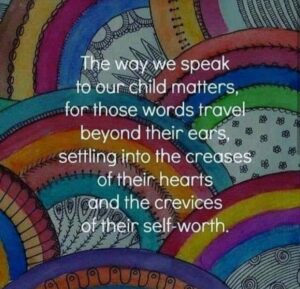I recently had a phone call about this and then today read a post of someone asking ‘How to deal with 1 year old tantrums?” So I felt it necessary to write about.
Tantrums are three things…. smart behaviour, big emotion and communication.
WHY
Your child is likely tantruming for two reasons; they cannot get what they want, or they are communicating with you. Possibly telling you they really want something and hope that if they make a big fuss they will get it.
Your child is experiencing big emotions. Treat them with kindness, but remember to not give the behaviour attention.

WHAT TO DO
You can hold the space, by sitting in the same room, perhaps in different areas. Sit at their level, probably on the floor, with hands open, in an invitational gesture, (see Happy days with Toddlers) and wait. Sit and wait quietly. This time and space allows the child to work through their emotions, while feeling supported by you. The key part here is that you say nothing. Just sit, invite and wait.
CALM
When they are calm, then they can communicate. This is why you read about the importance of children doing mindfulness practices. We need to teach children to self soothe/find their calm. Find presence. Then they, and you, can communicate with reason instead of emotional reaction.
COMMUNICATION
Every aged child can communicate when you promote communication. Communication is talking AND listening. From infancy, you can teach nz sign language or baby sign, children will use this for the next 5 years! Sign language promotes verbal language and communication.
For more information on this, check out Raising infants
We need children to know their voice is valued and heard…. when they are calm.
When your child tantrums, you respond with
“When you are calm, then you can tell me”
STAY STRONG
If the tantrum is because you have said no to something, you MUST stick to your word.
Keep it short, less words the better. Try and get your point across in 5 words or less.
If the tantrum continues, you simply respond with the same words you said. Repeat. Repeat.
Your child needs to learn that when you say no, you mean it. They need this for when they are older, to know that when someone says no, they mean it, listen.
This is a vital life skill.
WALK AWAY
If the child is tantruming and is not calming, walk away and encourage others to leave the room also. You can supervise from afar (without them seeing). This shows you are not interested in their behaviour and you do not accept it.
Walking away is often the toughest step, but by showing you are not interested in the behaviour the child will see it is not going to get them what they want.
Walk away. Take this time to take 3-5 present breaths. Find your calm. It takes 90 seconds for the brain to calm and change from a reactive state to a responsive state. Give your brain the time it needs.
Tips for walking away…
– make up a song
– sing your favorite song
– turn on the radio
– pretend to read a book or magazine (a great tool for supervision from afar)
Let the child know your expectations…
“When you are calm you can join us”.
Remember,
“Where the attention goes the behaviour grows”
– Incredible years teaching course.
When you show your child that you are not interested in their ‘noise’, they will learn that this behaviour is not effective. They can start to find their calm and work on their communication skills – talking AND listening.
The role you have to play is in keeping consistent. Stick to your word and do what you said you would do.
TRIGGERS
Know the triggers.
You know your child. Be smart about this. If you know what triggers your child, avoid it.
Make their life and learning successful. If it is something that has to be done, or is routine, so be it. It has to be done.
This is life. We all have to brush our teeth and shower every day. But, you can prepare and communicate with your child.
Waiting can be difficult for children and can trigger tantrums. Try using your fingers to count down time for them can be helpful. For more on this, see my post Happy days with Toddlers
Under 6 years, you get to call how long the time takes! So, 5 or 8 minutes might pass before you show and tell the child that it’s now 4 minutes to wait. It doesn’t matter! They are seeing it getting closer. Under 3 years, use only 2 fingers, countdown to 1 and then it is ‘time’. Over 3yrs, you can start counting down at 5 minutes.
TANTRUMS FOR LEARNING
Focus on your own communication – give warnings before change, do what you say you will do, listen to your childs voice and practice kindness.
Teach your child to communicate their wants and needs, work through their emotions, express themselves creatively, listen to others and practice kindness.
Do not let your child upset your inner peace. They are working though something. Guide them.
Acknowledge their feelings, give them notice, countdown on fingers, communicate and be consistent. Be strong. You’ve got this.

Be patient. Be kind. Be calm. Be present. Be responsive.
Kia kaha, stand tall.
Related posts:
Raising infants
Happy days with Toddlers
Empowering our Young Children
Behaviours sent to challenge us
